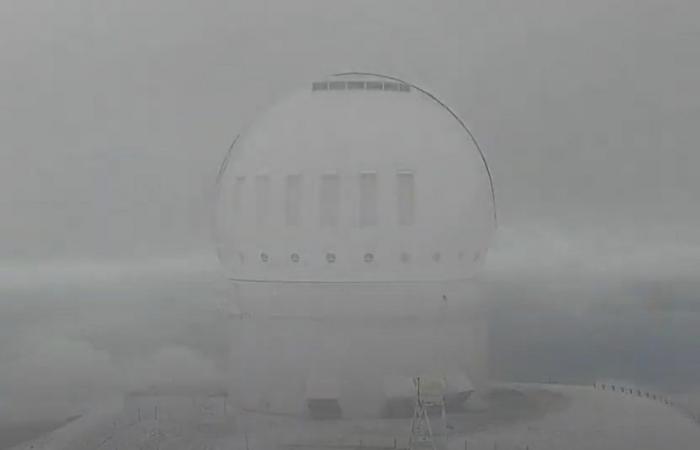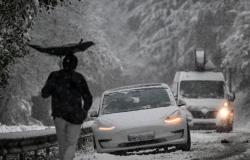(Honolulu) Snow fell on Hawaii’s highest peak this week, briefly transforming the mountaintop into a winter wonderland. The summit area of Mauna Kea on the Big Island received about five centimeters of white powder.
Published yesterday at 5:41 p.m.
Audrey Mcavoy
Associated Press
The state of Hawaii is best known for its warm climate, beaches and rainforests. But it’s not unusual for snow to fall at Mauna Kea’s higher elevations during the wetter winter months.
The peak is so high – it sits 4,207 meters above sea level – that temperatures there can drop below freezing year-round, creating the potential for snow at any time of year. .
This week, an upper-level disturbance brought colder temperatures as moisture arrived from the east and moved over the islands Sunday through Monday, said Maureen Ballard, senior meteorologist with the National Weather Service at Honolulu.
“The combination of cold temperatures and humidity results in snow when it’s below freezing,” explained Ms.me Ballard.
Cameras installed on the Canada-France-Hawaii telescope showed the ground covered in snow shortly after sunrise Monday. Two days later, cameras showed the snow had disappeared.
No one lives on top of Mauna Kea, which is sacred to many Native Hawaiians. Centuries-old stories say that Mauna Kea is the eldest son of the Sky Father and the Earth Mother.
The limited light pollution and dry atmosphere atop the mountain also make it one of the best places in the world to view the night sky. Astronomers built a dozen telescopes at the summit, leading to Nobel Prize-winning discoveries and some of the first images of planets outside our solar system.
World






